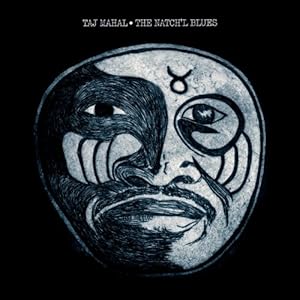Not long after I moved to Georgia I was out for lunch with a few of my new colleagues when the name Lester Maddox came up, and immediately my mind went, “Last night I saw Lester Maddox on a TV show with some smart-ass New York Jew. And the Jew laughed at Lester Maddox. And the audience laughed at Lester Maddox, too.” I didn’t know anything about Maddox except those lines. They’re the opening verses of “Rednecks,” the first track on Randy Newman’s Good Old Boys, one of the best singer-songwriter albums of all time. Turns out Maddox was governor of Georgia in the 70s. When he campaigned, he carried around an ax handle and he bragged about how he swung it at blacks to keep them out of the restaurant he owned. In the song, Newman sings, “He may be a fool but he’s our fool. If they think they’re better than us they’re wrong. So I went to the park and I took some paper along, and that’s where I wrote this song.”
I couldn’t get the song out of my head when I first moved down here. It has so many great lines. “We talk real funny down here. We drink too much. We laugh too loud. We’re too dumb to make it in no Northern town.” And, “College boys from LSU. Went in dumb, come out dumb, too. Hustling around Atlanta in their alligator shoes. Getting drunk on the weekend at the barbecue.” And all these little Southern vignettes are punctuated with (forgive me): “We’re keeping the niggers down.” And just when you’re about to give up on the song, despite its lovely melody, because it’s just too obnoxious, Newman sings, “Now your Northern nigger’s a negro. You see, he’s got his dignity. Down here we’re too ignorant to realize, the North has set the nigger free. Yes, he’s free to be put in a cage in Harlem in New York City, he’s free to be put in a cage in the Southside of Chicago, and the Westside.” And so on through Cleveland and East St. Louis and San Francisco and Boston: “They’re gathering up from miles around, keeping the niggers down.” And then the chorus again, as punch line: “We’re rednecks. We’re rednecks. We’re keeping the niggers down.” Ha ha. Joke’s on, well, all of us.
You wouldn’t know it from his cartoon soundtracks, but Newman is one edgy bastard. “Rednecks” treads right on the razor edge of offensiveness but remains on the good side because it’s smart, and it’s true. It’s especially ballsy for when it came out – in 1974, when the nation was turning hard toward the left and away from centuries in which overt racism was pretty much an acceptable thing. And it sounds great. It’s just a plain, old song, sung in the simple hum-along style of all good, old songs. The album is full of them, most all of them related in some way to the South. Every number is a different character: the factory worker from Birmingham with a big, black dog named Dan in his backyard; the forlorn drunk who needs a whole lot of medicine to pretend like he’s somebody else; the kingpin politico who may be corrupt but he sure gets things done; the beauty whose dad was a midget, mom was a whore and granddad was a newsboy till he was 84. Some of the songs are slow and beautiful, some got a little more kick to them, but they’re all easy on the ears, though never syrupy and sentimental. A few are achingly beautiful. One that always gets me is “Louisiana 1927.” It’s a ballad about a terrible storm that rolled in from the North and made the river rise until there were six feet of water in the streets of Evangeline. If you listen to it in the context of the time in which it was released, it comes across as a metaphor for change in the South. But now it’s hard not to hear it as prescient, with its chorus, “Louisiana, Louisiana, they’re trying to wash us away,” hard not to think of Katrina and all the neighborhoods in New Orleans that remain vacant today. Great records are timeless in that way, and this one’s truly one of the best.
---Joe Miller





















